Youth lead digital farming revolution as ASARECA bridges tech gap in Uganda
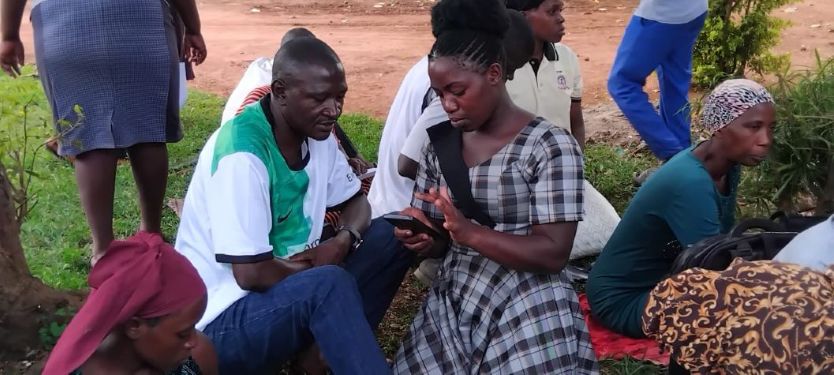
Wedged between, falling yields, climate change and aging rural populations, African agriculture—and by extension, food security—is facing an existential crisis. In Uganda, youth often avoid farming as an occupation, turned off by its image of back-breaking labour, high risk, and poor returns.
Even the older active farmers are hostage to barely functional extension services, climate shocks, and dependency on exploitative middlemen. But the scientific community has not given up on them.
According to Dr. Joshua Okonya, Program Officer for Agricultural Technology and Innovation at the Association for Strengthening Agricultural Research in Eastern And Central Africa – ASARECA, the average age of farmers in Africa is 55. This is because “being a farmer is not cool,” he says. But not everyone needs to dig in the soil. With a growing number of digital tools now mitigating agriculture’s biggest risks, researchers see a new relevance for youth in the agricultural value chain —as digital enablers.
“They can develop products, onboard farmers, and make money,” Okonya notes.
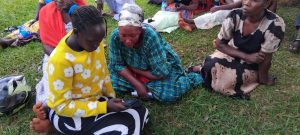 At the start of July 2025, teams of young, tech-savvy agripreneurs fanned out across Luweero, Nakaseke, Lira, Buikwe, and Bugiri districts. Their goal was simple: help farmers adopt M-Omulimisa, a digital platform offering a range of services including weather forecasts, verified inputs duppliers, crop insurance, and market information.
At the start of July 2025, teams of young, tech-savvy agripreneurs fanned out across Luweero, Nakaseke, Lira, Buikwe, and Bugiri districts. Their goal was simple: help farmers adopt M-Omulimisa, a digital platform offering a range of services including weather forecasts, verified inputs duppliers, crop insurance, and market information.
In Zirobwe, 50 kilometers northeast of Kampala, elderly farmers gathered under the shade of a mango tree—some barefoot, others carrying toddlers—clutching smartphones. Standing before them was Wabulyu Janepher, operations manager at M-Omulimisa, explaining the platform’s features.
Wabulyu is working alongside youth agripreneurs called Digital Connectors, trained and deployed under a broader initiative called Accelerating Impacts of CGIAR Climate Research for Africa (AICCRA). Spearheaded by ASARECA in collaboration with AFAAS and UFAAS, and supported by multi-partner projects like CAADP-XP4 and AIRTEA, the initiative is digitising agriculture from the ground up.
Digital Tools, Real-World Impact
For farmers like Mzee Wandira of Zirobwe, M-Omulimisa is a game-changer. “It used to take forever to solve problems on the farm,” he says. “Now, with Manya, we get instant answers.” He particularly values the market information tool, which protects him from predatory pricing by brokers. “Now I can make informed decisions—sell or hold depending on the real market price.”
Rose Namugambe, a 25-year-old Digital Connector in Zirobwe who also teaches and farms, points to the pest identification feature. “Sometimes you find symptoms you can’t recognise. With the app, I take a photo and receive an advisory on the pest and what to do. It used to take weeks to get an extension worker to respond.”
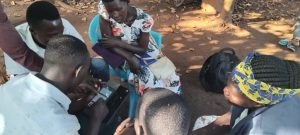 M-Omulimisa offers a full package of location-specific weather forecasts, real-time commodity prices, access to quality inputs, index-based insurance, and crop-specific extension guidance. What’s transformative is how all these services are bundled and localized to directly address rural farming pain points. For many smallholders, it’s not a lack of willpower—but access. That’s the gap these youth are filling.
M-Omulimisa offers a full package of location-specific weather forecasts, real-time commodity prices, access to quality inputs, index-based insurance, and crop-specific extension guidance. What’s transformative is how all these services are bundled and localized to directly address rural farming pain points. For many smallholders, it’s not a lack of willpower—but access. That’s the gap these youth are filling.
From Climate Risk to Climate Resilience
Uganda’s agricultural sector—its largest employer—is highly vulnerable to climate change. Erratic rainfall, droughts, and poor soil health are undermining yields, particularly for staples like maize and beans.
In Zirobwe, members of the Zirobwe Agaliawamu Agri-business Training Association (ZAABTA) have long faced poor practices, fake inputs, and information blackouts. Unpredictable rain patterns mean either too little or too much. Either way, farmers lose. “We guessed when the rains would come,” says farmer Esther, an elderly farmer. “We guessed wrong.”
Now, with real-time weather and extension advice, they hope to plant smarter, source genuine seeds, and insure their crops. “This technology doesn’t just inform us,” she adds. “It protects us.”
According to Ms. Julian Barungi, Program Officer for Policy at ASARECA, the expectation is that as more farmers use M-Omulimisa, they will enhance their resilience to climate change. “They will be guarded against the shocks of the effects of climate change, arising from drought or too much rainfall. They will also be able to increase their agricultural output, earnings, and ultimately their livelihoods.”
She emphasizes that the Digital Connectors, or village agents, are drawn from the same communities where the farmers live and work. “They will provide a backstop to ensure that the farmers do not face any challenges that may arise from using these digital platforms,” she says.
Betting on the Youth Dividend
Uganda’s transformation won’t happen through technology alone. It requires people—especially the youth. With more than 75pc of Ugandans under the age of 30, the country holds a vast untapped human capital reserve. But agriculture has long carried a stigma of being unprofitable and unglamorous.
Initiatives like AIRTEA and AICCRA are shifting that perception. Through digital literacy, agri-business development, and climate-smart training, young Digital Connectors are becoming respected community leaders.
“Before this program, I was unemployed and unsure of my future,” says Emmanuel, a 26-year-old Connector in Lira. “Now, I help farmers earn more—and I make a living too.”
 ASARECA’s Innovation Platform approach, in place since 2008, has linked farmers, researchers, and private actors across 15 countries. With digital overlays, these platforms now serve as robust ecosystems for scaling innovation beyond single districts.
ASARECA’s Innovation Platform approach, in place since 2008, has linked farmers, researchers, and private actors across 15 countries. With digital overlays, these platforms now serve as robust ecosystems for scaling innovation beyond single districts.
The momentum is backed by international collaboration. CAADP-XP4, supported by the European Union through the DeSIRA initiative, is in its final implementation year under IFAD’s oversight. The AICCRA project, funded by the World Bank, supports IDA-eligible countries in scaling climate-smart agriculture. AIRTEA, funded by the ACP Innovation Fund, is expanding research-to-market systems across East Africa.
Together, these efforts are transforming the agriculture landscape—expanding access to services, improving resilience, and restoring dignity to farming. Most importantly, they are proving that with digital tools and youth leadership, rural transformation is not only possible but already underway.
Future Outlook: Scaling the Digital Revolution
Uganda’s rural districts may be the pilot ground, but the vision is regional. Plans are emerging to replicate the Digital Connector model across ASARECA member states.
“The digitalisation of agriculture is not a luxury—it’s a necessity,” says Dr. Okonya. “To feed our people, adapt to climate change, and create jobs, we must build systems where technology and tradition work together.”
t.


 Uganda-linked study identifies new diabetes subtype in African youth, raising questions over diagnosis and treatment
Uganda-linked study identifies new diabetes subtype in African youth, raising questions over diagnosis and treatment
 Land Value Capture: Unlocking Urban Value and Financing Inclusive Growth in Africa’s Informal Settlements
Land Value Capture: Unlocking Urban Value and Financing Inclusive Growth in Africa’s Informal Settlements
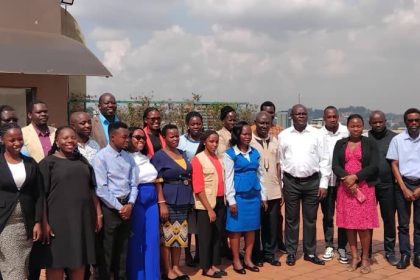 ASARECA rallies regional stakeholders to advance agroecology for Africa’s food resilience
ASARECA rallies regional stakeholders to advance agroecology for Africa’s food resilience
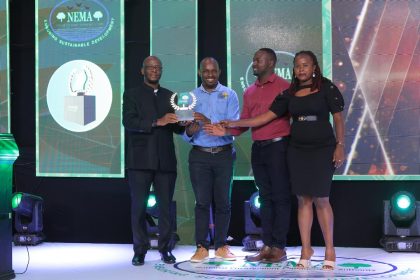 Nile Breweries’ Mbarara plant earns double honours at 2025 National Environment Sustainability Awards
Nile Breweries’ Mbarara plant earns double honours at 2025 National Environment Sustainability Awards
 I dreamt that farmers became millionaires—then I woke up in Kigali
I dreamt that farmers became millionaires—then I woke up in Kigali
 Uganda outpaces Ethiopia with record coffee exports ahead of World of Coffee Geneva 2025
Uganda outpaces Ethiopia with record coffee exports ahead of World of Coffee Geneva 2025
